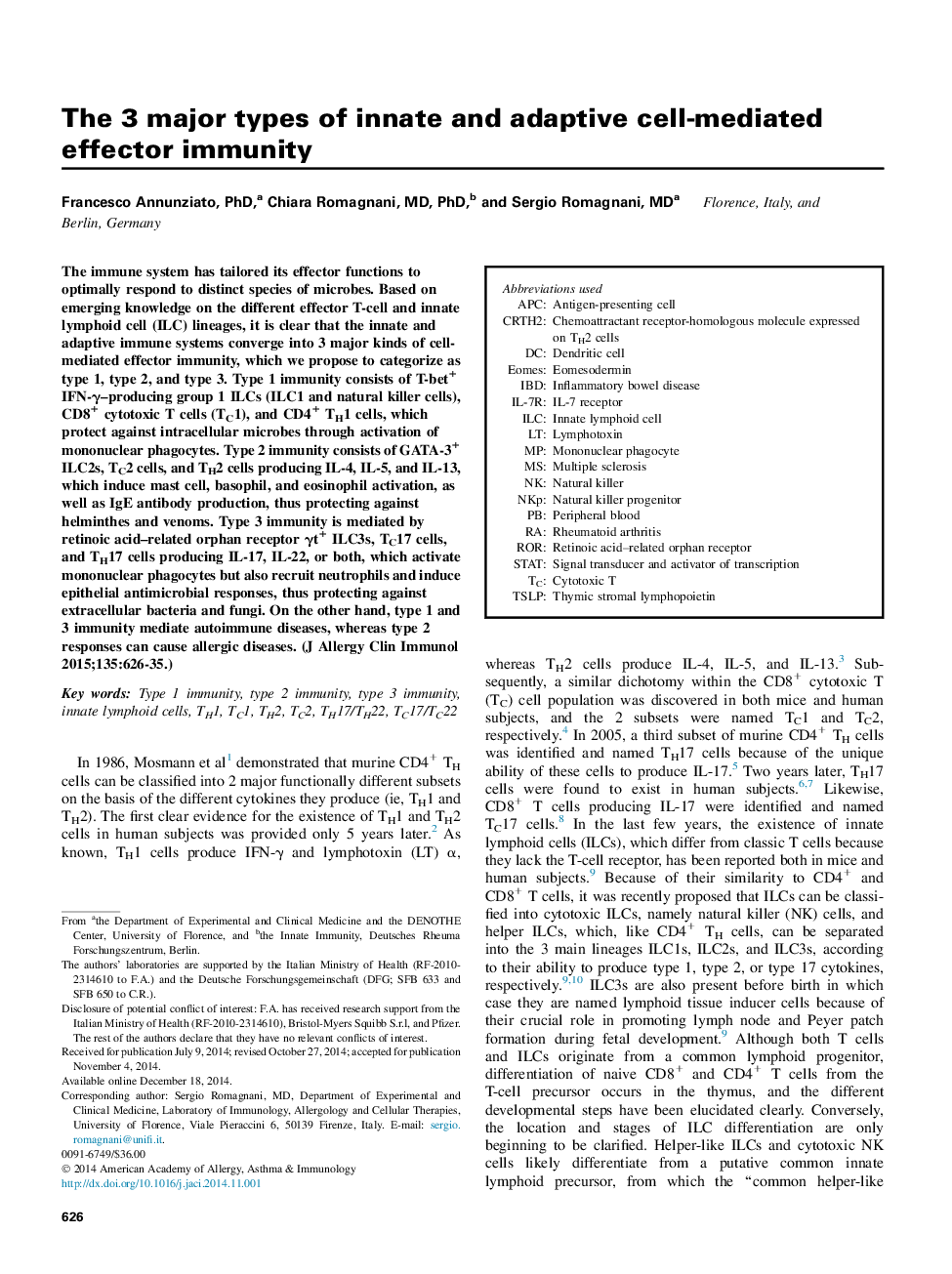| Article ID | Journal | Published Year | Pages | File Type |
|---|---|---|---|---|
| 6063000 | Journal of Allergy and Clinical Immunology | 2015 | 10 Pages |
Abstract
The immune system has tailored its effector functions to optimally respond to distinct species of microbes. Based on emerging knowledge on the different effector T-cell and innate lymphoid cell (ILC) lineages, it is clear that the innate and adaptive immune systems converge into 3 major kinds of cell-mediated effector immunity, which we propose to categorize as type 1, type 2, and type 3. Type 1 immunity consists of T-bet+ IFN-γ-producing group 1 ILCs (ILC1 and natural killer cells), CD8+ cytotoxic T cells (TC1), and CD4+ TH1 cells, which protect against intracellular microbes through activation of mononuclear phagocytes. Type 2 immunity consists of GATA-3+ ILC2s, TC2 cells, and TH2 cells producing IL-4, IL-5, and IL-13, which induce mast cell, basophil, and eosinophil activation, as well as IgE antibody production, thus protecting against helminthes and venoms. Type 3 immunity is mediated by retinoic acid-related orphan receptor γt+ ILC3s, TC17 cells, and TH17 cells producing IL-17, IL-22, or both, which activate mononuclear phagocytes but also recruit neutrophils and induce epithelial antimicrobial responses, thus protecting against extracellular bacteria and fungi. On the other hand, type 1 and 3 immunity mediate autoimmune diseases, whereas type 2 responses can cause allergic diseases.
Keywords
RORNKPTc2Tc1IL-7RTh2Th1TSLPcytotoxic TEomesoderminCRTH2ILCAPCIBDnatural killerRheumatoid arthritisSTATantigen-presenting celltype 2 immunityInflammatory bowel diseasePeripheral bloodEOMESDendritic cellinnate lymphoid cellInnate lymphoid cellsMononuclear phagocyteLymphotoxinThymic stromal lymphopoietinSignal transducer and activator of transcriptionMultiple sclerosischemoattractant receptor-homologous molecule expressed on Th2 cellsIL-7 receptorRetinoic acid–related orphan receptor
Related Topics
Life Sciences
Immunology and Microbiology
Immunology
Authors
Francesco PhD, Chiara MD, PhD, Sergio MD,
